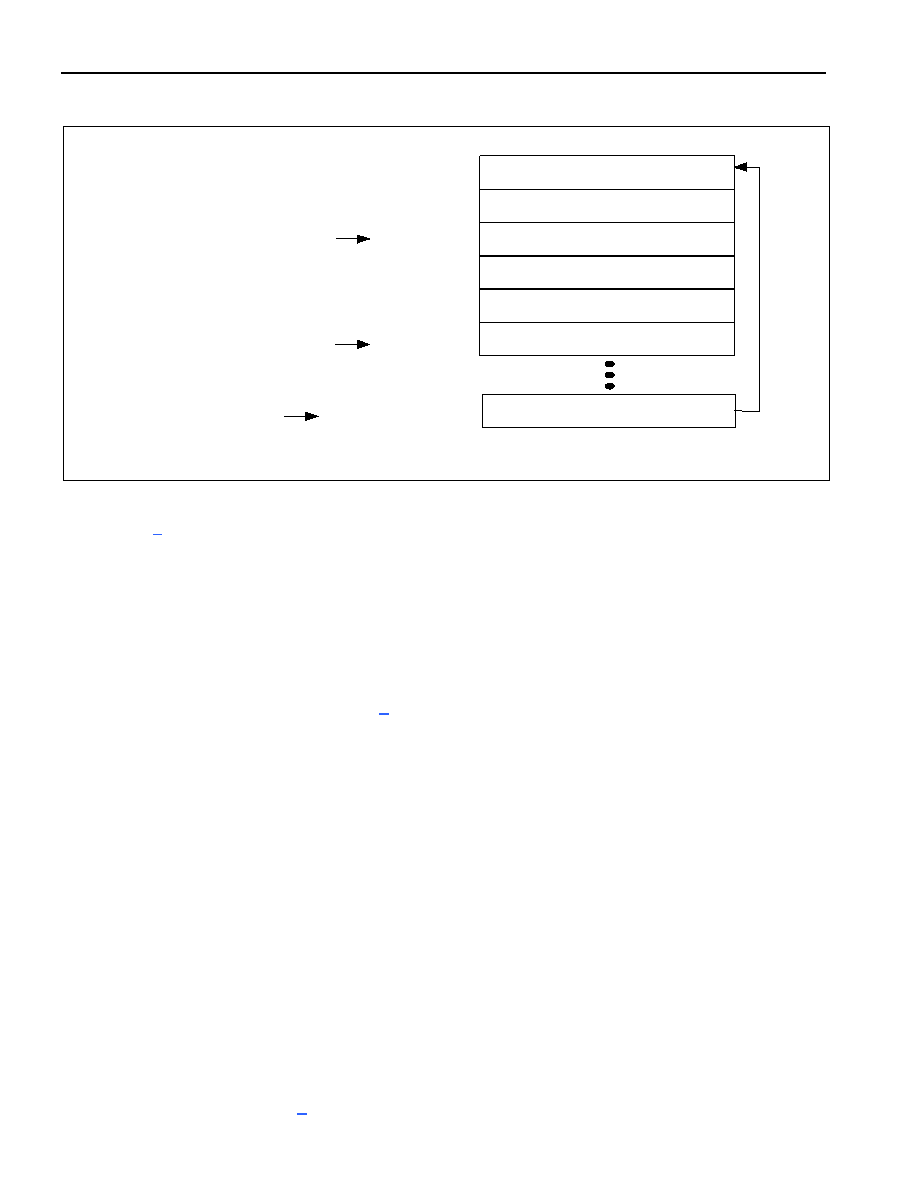- 您現(xiàn)在的位置:買賣IC網(wǎng) > PDF目錄97869 > DS3131 (MAXIM INTEGRATED PRODUCTS INC) SPECIALTY TELECOM CIRCUIT, PBGA256 PDF資料下載
參數(shù)資料
| 型號(hào): | DS3131 |
| 廠商: | MAXIM INTEGRATED PRODUCTS INC |
| 元件分類: | Telecom IC:Other |
| 英文描述: | SPECIALTY TELECOM CIRCUIT, PBGA256 |
| 封裝: | 27 X 27 MM, PLASTIC, BGA-256 |
| 文件頁數(shù): | 12/174頁 |
| 文件大小: | 1261K |
| 代理商: | DS3131 |
第1頁第2頁第3頁第4頁第5頁第6頁第7頁第8頁第9頁第10頁第11頁當(dāng)前第12頁第13頁第14頁第15頁第16頁第17頁第18頁第19頁第20頁第21頁第22頁第23頁第24頁第25頁第26頁第27頁第28頁第29頁第30頁第31頁第32頁第33頁第34頁第35頁第36頁第37頁第38頁第39頁第40頁第41頁第42頁第43頁第44頁第45頁第46頁第47頁第48頁第49頁第50頁第51頁第52頁第53頁第54頁第55頁第56頁第57頁第58頁第59頁第60頁第61頁第62頁第63頁第64頁第65頁第66頁第67頁第68頁第69頁第70頁第71頁第72頁第73頁第74頁第75頁第76頁第77頁第78頁第79頁第80頁第81頁第82頁第83頁第84頁第85頁第86頁第87頁第88頁第89頁第90頁第91頁第92頁第93頁第94頁第95頁第96頁第97頁第98頁第99頁第100頁第101頁第102頁第103頁第104頁第105頁第106頁第107頁第108頁第109頁第110頁第111頁第112頁第113頁第114頁第115頁第116頁第117頁第118頁第119頁第120頁第121頁第122頁第123頁第124頁第125頁第126頁第127頁第128頁第129頁第130頁第131頁第132頁第133頁第134頁第135頁第136頁第137頁第138頁第139頁第140頁第141頁第142頁第143頁第144頁第145頁第146頁第147頁第148頁第149頁第150頁第151頁第152頁第153頁第154頁第155頁第156頁第157頁第158頁第159頁第160頁第161頁第162頁第163頁第164頁第165頁第166頁第167頁第168頁第169頁第170頁第171頁第172頁第173頁第174頁

DS3131
109 of 174
Figure 9-18. Transmit Pending-Queue Structure
Once the transmit DMA is activated (by setting the TDE control bit in the master configuration register;
see Section 5), it can begin reading data out of the pending queue. It knows where to read the data by
reading the read pointer and adding it to the base address to obtain the actual 32-bit address. Once the
DMA has read the pending queue, it increments the read pointer by one dword. A check must be made to
ensure the incremented address does not exceed the transmit pending-queue end address. If the
incremented address does exceed this address, the incremented read pointer is set equal to 0000h.
Status/Interrupts
On each read of the pending queue by the DMA, the DMA sets the status bit for transmit DMA pending-
queue read (TPQR) in the status register for DMA (SDMA). The status bits can also (if enabled) cause
an hardware interrupt to occur. See Section 5 for more details.
Pending-Queue Burst Reading
The DMA has the ability to read the pending queue in bursts, which allows for a more efficient use of the
PCI bus. The DMA can grab descriptors from the pending wueue in groups rather than one at a time,
freeing up the PCI bus for more time-critical functions.
An internal FIFO can store up to 16 pending-queue descriptors (16 dwords, since each descriptor
occupies one dword). The host must configure the pending-queue FIFO for proper operation through the
transmit DMA queues-control (TDMAQ) register (see the following).
When enabled through the transmit pending-queue FIFO-enable (TPQFE) bit, the pending-queue FIFO
does not read the pending queue until it is empty. When the pending queue is empty, it attempts to fill
the FIFO with additional descriptors by burst reading the pending queue. Before it reads the pending
queue, it checks (by examining the transmit pending-queue host write pointer) to ensure the pending
queue contains enough descriptors to fill the pending-queue FIFO. If the pending queue does not have
enough descriptors to fill the FIFO, it only reads enough to empty the pending queue. If the FIFO detects
that there are no pending-queue descriptors available for it to read, then it waits and trys again later. If
the pending-queue FIFO can read descriptors from the pending queue, it burst reads them, increments the
read pointer, and sets the status bit for transmit DMA pending-queue read (TPQR) in the status register
for DMA (SDMA). See Section 5 for more details about status bits.
Base + 00h
Base + 04h
Base + 08h
Base + 0Ch
Base + 10h
Base + 14h
Base + End Address
Pending-Queue Host Write Pointer
Pending-Queue DMA Read Pointer
Maximum of 65,536
Pending-Queue Descriptors
DMA Acquired
Pending-Queue Descriptor
Host Readied
Pending-Queue Descriptor
Host Readied
Pending-Queue Descriptor
Host Readied
Pending-Queue Descriptor
DMA Acquired
Pending-Queue Descriptor
DMA Acquired
Pending-Queue Descriptor
Host Readied
Pending-Queue Descriptor
相關(guān)PDF資料 |
PDF描述 |
|---|---|
| DS3134 | DATACOM, FRAMER, PBGA256 |
| DS3150QN | DATACOM, PCM TRANSCEIVER, PQCC28 |
| DS3150Q | DATACOM, PCM TRANSCEIVER, PQCC28 |
| DS3150TN | DATACOM, PCM TRANSCEIVER, PDIP48 |
| DS3150T | DATACOM, PCM TRANSCEIVER, PQFP48 |
相關(guān)代理商/技術(shù)參數(shù) |
參數(shù)描述 |
|---|---|
| DS3131DK | 功能描述:通信集成電路 - 若干 RoHS:否 制造商:Maxim Integrated 類型:Transport Devices 封裝 / 箱體:TECSBGA-256 數(shù)據(jù)速率:100 Mbps 電源電壓-最大:1.89 V, 3.465 V 電源電壓-最小:1.71 V, 3.135 V 電源電流:50 mA, 225 mA 最大工作溫度:+ 85 C 最小工作溫度:- 40 C 封裝:Tube |
| DS3134 | 功能描述:IC CTRLR HDLC CHATEAU 256-BGA RoHS:否 類別:集成電路 (IC) >> 接口 - 控制器 系列:- 標(biāo)準(zhǔn)包裝:4,900 系列:- 控制器類型:USB 2.0 控制器 接口:串行 電源電壓:3 V ~ 3.6 V 電流 - 電源:135mA 工作溫度:0°C ~ 70°C 安裝類型:表面貼裝 封裝/外殼:36-VFQFN 裸露焊盤 供應(yīng)商設(shè)備封裝:36-QFN(6x6) 包裝:* 其它名稱:Q6396337A |
| DS-313PIN | 制造商:未知廠家 制造商全稱:未知廠家 功能描述:Analog Miscellaneous |
| DS-313-PIN | 功能描述:信號(hào)調(diào)節(jié) RoHS:否 制造商:EPCOS 產(chǎn)品:Duplexers 頻率:782 MHz, 751 MHz 頻率范圍: 電壓額定值: 帶寬: 阻抗:50 Ohms 端接類型:SMD/SMT 封裝 / 箱體:2.5 mm x 2 mm 工作溫度范圍:- 30 C to + 85 C 封裝:Reel |
| DS31400 | 制造商:MAXIM 制造商全稱:Maxim Integrated Products 功能描述:8-Input, 14-Output, Dual DPLL Timing IC with Sub-ps Output Jitter |
發(fā)布緊急采購,3分鐘左右您將得到回復(fù)。